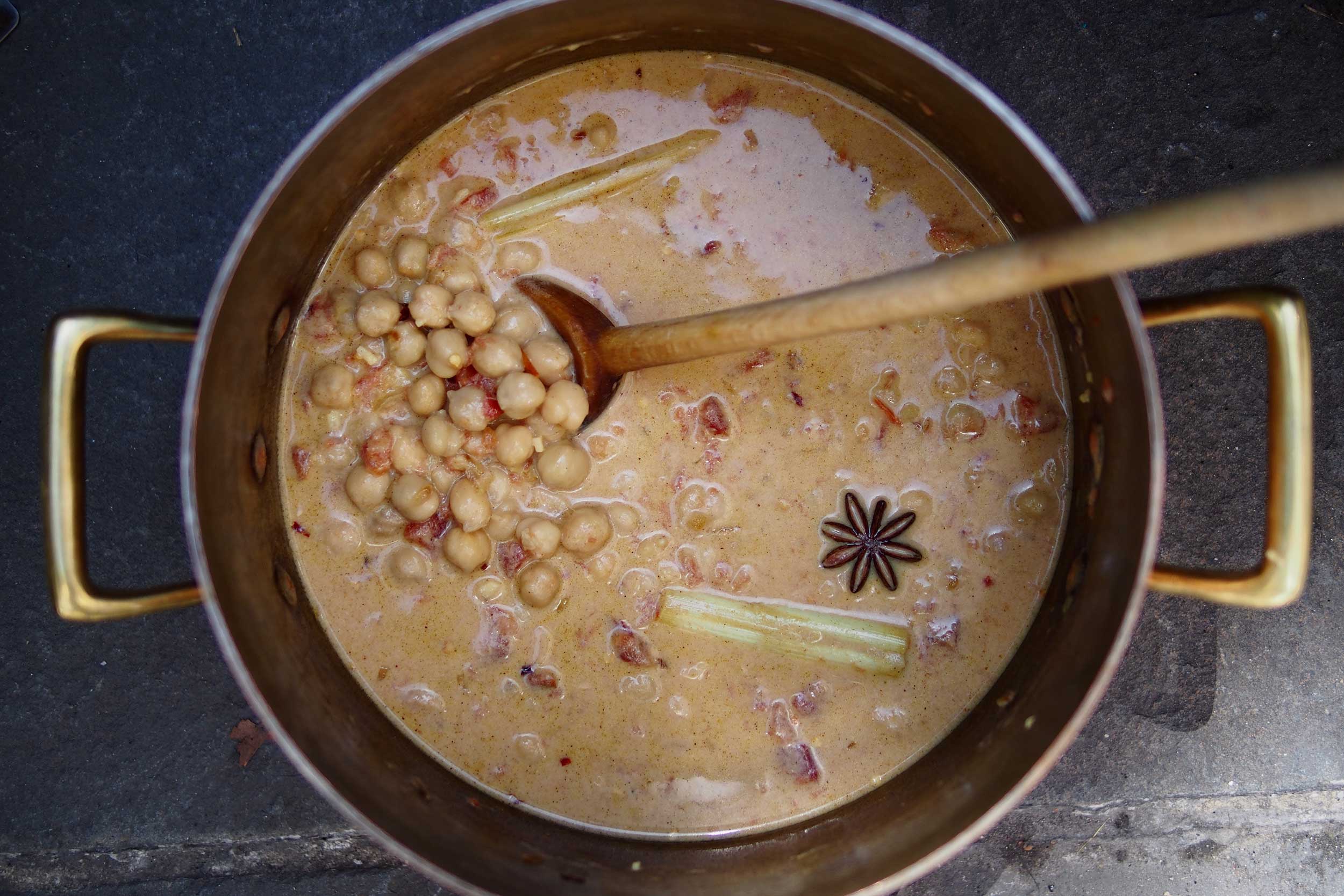This story is part of On Repeat, a series in which we ask top chefs, cookbook authors, and other famous foodies about the dishes they just can’t quit.
It’s a new year, and with it we wanted to double-down on the amount of meatless and low-waste meal inspiration we’re delivering to your inboxes. So, welcome to On Repeat, a series where we ask food pros and prolific home cooks about the dishes they keep coming back to—and why.
You’ll hear from chefs, cookbook writers, artisans, and farmers, as well as food journalists like yours truly. The Cool Beans crew nominated me to kick things off with my own hero recipe—something I’ve been making for family and friends in one iteration or another for more than a decade. It’s a coconut-chickpea stew extraordinaire, but you can think of it as winner, winner, chickpea dinner.
Why I love it
When my formerly cheeseburger-obsessed kid revealed that he was gaga for garbanzos, I jumped at the chance to put more plant-based mains into our dinner rotation. After feeding the fam an Italian chickpea soup that everyone slurped enthusiastically, I looked to India for something totally different. I tried my hand at a Northern-style chana masala that came out kind of meh, so I decided to lean in a South Indian direction, incorporating some of my favorite flavors (coconut, ginger, and warm spices) until I came up with my Platonic ideal of chickpea stew.
That was 10-plus years ago—long before Alison Roman broke the internet with a recipe that became known simply as #thestew—and I’ve been making some version of this dish at least a couple times a month ever since.
In spite of a somewhat lengthy list of ingredients, the recipe is eminently adaptable. No matter the mix of spices, alliums, and other aromatics I include, it manages to be both cozy and uncommon at the same time, in that it’s a warming bowl of hearty, comforting goodness that also has a beguiling flavor and aroma. It’s also super nutritious: Chickpeas have plenty of protein and fiber, and if you serve the stew over rice, you end up with all the essential aminos that make up a complete protein.
What I’ve changed
What have I not played with? I’d say the only required ingredients are chickpeas, spices, and full-fat canned coconut milk. If I don’t have coconut flakes, I leave them out. Ditto lemongrass. Chopped cilantro (or parsley), a squeeze of citrus, and/or a dab of hot sauce are all great accouterments. If I’m lazy, I forgo the individual spices in favor of a big spoonful of Chinese five-spice—usually with some added turmeric. If I don’t have diced tomatoes, I throw in some jarred sauce or a bit of paste. These days, I tend to swap olive oil for coconut oil, to avoid the additional saturated fat (plus there’s enough of it in the coconut milk).
What else I’m into right now:
Speaking of chickpeas … starting next week, my favorite hummus—from James Beard Award-winning Zahav restaurant in Philly—will be sold at Whole Foods in New York, Philadelphia, and Boston ($7.99 for a 10-ounce container).
After reading Corinne’s New Year’s resolution to avoid buying salad greens that come in plastic, I wandered into the new supermarket near my place on the Upper West Side and was greeted by a fresh, vibrant array of unpackaged produce, including myriad bundles of lovely dark leafies and mini cukes sold loose by the pound. Now I have ample opportunity to use my new mesh produce bags.
Kate Hall at The Full Freezer, who helped us help you organize your cold storage to decrease food waste, just announced that her brand-new book, The Full Freezer Method, comes out March 14 and is available for preorder.

